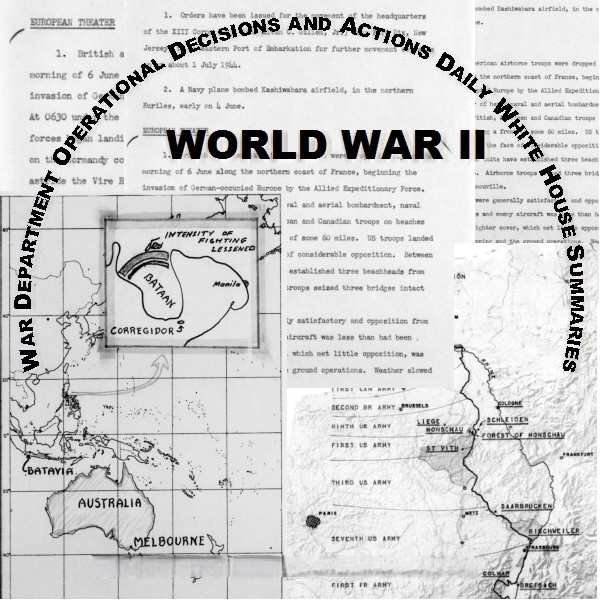
Description
World War II Daily White House Summaries: Operational Decisions
Timeline of Main Events (Based on Source Description)
This timeline is based on the description of the “World War II War Department Operational Decisions & Actions Daily White House Summaries” and reflects the types of events covered in these reports, rather than specific battles or dates.
- December 11, 1941: Earliest date of the Daily Summary War Department Operational Decisions and Actions Respecting Hostilities with Axis reports. Initial reports likely focus on the immediate aftermath of Pearl Harbor and the US declaration of war.
- Early Months of US Involvement: Reports heavily emphasize:
- The response to advances made by Japanese forces throughout the Pacific.
- Decisions involving the buildup of forces in Australia.
- Allied command and control coordination and delineation of operational areas (e.g., Pacific, European theaters).
- Defensive operations in various theaters.
- Buildup of U.S forces in strategic locations like Iceland and Northern Ireland.
- Changes in Lend-Lease aid to Allied nations.
- U.S. military and air force deployments across the globe.
- Widening of the War: As the conflict expands, the reports begin to cover a broader range of subjects, including:
- Air, ground, and naval deployments in various theaters (European, Pacific, Southwest Pacific, Mediterranean, Asiatic).
- Evaluations of enemy capabilities and intentions.
- Training of military personnel.
- War production and its impact on operations.
- Soviet activity on the Eastern Front.
- Increased US Combat Role: With greater American involvement in direct combat, the reports shift focus to:
- Detailed accounts of battles and campaigns in all theaters.
- United States and Allied war planning and strategic directives.
- The results and analysis of air operations.
- Casualty reports from various engagements.
- Throughout the War (December 1941 – April 1945): The Daily Summaries, including the White House Summaries, consistently:
- Provide a synopsis of the operational decisions and actions taken by the War Department.
- Include maps and charts highlighting the progress of campaigns and battles.
- Detail the locations of air operations.
- Track the movements of Allied and Axis forces.
- Organize information geographically initially, then by operational areas, fronts, theaters, and specific locations (e.g., North Africa, CBI theater, Western Front).
- Are compiled by the War Plans Division (WPD) using information from various sources (Army and Navy Departments, Joint Chiefs of Staff, Combined Chiefs of Staff, commanders, intelligence reports).
- Are delivered daily to the White House at 5:00 PM, covering the preceding 24-hour period ending at 2:00 PM.
- April 12, 1945: Latest date of the Daily Summary War Department Operational Decisions and Actions Respecting Hostilities with Axis reports covered in this collection. Reports at this time would likely focus on the final stages of the war in Europe and the ongoing fighting in the Pacific.
Cast of Characters (Principle People Mentioned)
- Franklin Delano Roosevelt: The President of the United States during World War II. The Daily White House Summaries were created and sent to him to keep him informed about the War Department’s operational decisions and actions.
- Chief of Staff (of the Army): While not a specific name, this refers to the highest-ranking officer in the U.S. Army. The Chief of Staff specifically ordered the War Plans Division (WPD) to prepare the daily reports for the War Department and the President. This individual held immense influence over military strategy and operations.
- Ray S. Cline: A Department of Defense historian who, in his 1950 publication “The War Department: Washington Command Post: The Operations Division,” provided historical context and explained the purpose and creation of the Daily Summaries. His work gives insight into the War Department’s information flow during the war.
- Staff of the War Plans Division (WPD): This refers to the personnel within the War Department responsible for compiling and producing the Daily Summaries. They gathered information from various military and intelligence sources, analyzed it, and synthesized it into the reports for the War Department and the White House.
It’s important to note that while these are the principle people mentioned in the description of the source, the actual Daily Summaries would contain information about numerous other military leaders, commanders, and figures involved in the war effort on both the Allied and Axis sides
World War II War Department Operational Decisions & Actions Daily White House Summaries
9,591 pages of the Daily Summary War Department Operational Decisions and Actions Respecting Hostilities with Axis reports (All theaters of war). 1,217 reports dating from December 11, 1941 to April 12, 1945.
The White House Summary was a modified version of the War Department Daily Operational Summary. These summary reports were created by the War Department and sent to the Roosevelt White House. They cover the European, Pacific, Southwest Pacific, Mediterranean, Asiatic theaters of war and Soviet activity on the Eastern Front.
In “The War Department: Washington Command Post: The Operations Division (1950),” Ray S. Cline, Department of Defense historian wrote that, “Immediately after Pearl Harbor the War Department’s War Plans Division became the War Department center for current information concerning or affecting Army operations. Upon specific orders from the Chief of Staff, WPD undertook to report daily, for the benefit of the War Department and the President, the ‘operational decisions and actions of the War Department.’ For that purpose all other divisions of the General Staff and the Army Air Forces reported to WPD on their individual actions. The Daily Summary, including the abridged form called the White House Summary, was prepared in much the same form throughout the war. From its knowledge of strategic plans and from the detailed operational information made available by other Army agencies, WPD amassed a uniquely comprehensive understanding of current military issues, particularly the urgent ones under consideration by the Chief of Staff.”
The purpose of these reports, which were classified as SECRET or TOP SECRET until 1972, was to provide a synopsis of the operational decisions and the actions taken by the War Department during World War II to the Roosevelt White House. They included maps and charts highlighting the progress of campaigns and battles, locations of air operations, and movements of Allied and Axis forces.
The War Department’s War Plans Division staff compiled information from various sources, including situation and war progress reports from the Army and Navy Departments, U.S. Joint Chiefs of Staff, Combined Chiefs of Staff, military commanders and observers and intelligence reports. These summaries were usually delivered to the White House daily at 5:00 PM and covered the twenty-four hour period ending at 2:00 PM.
Earlier reports broke down the information by geographic area, e.g., North America, Latin America, Europe, Africa and the Middle East, and Pacific Ocean. As United States involvement expanded world-wide the information was presented by the operational areas, fronts, theaters, and specific country or geographic location, e.g., Asiatic theater, CBI theater, Eastern front, European theater, Mediterranean Area, North Africa, South West Pacific Area (SWPA), Western front, and Western Hemisphere.
The summaries follow the progression of American participation in the war. The first reports deal with the response to advances made by Japanese forces throughout the Pacific. For the first few months much attention is given to decisions involving the buildup of forces in Australia, Allied command and control coordination and delineation of operational areas, defensive operations, buildup of U.S forces in Iceland and Northern Ireland, changes in Lend Lease aid, and U.S. military and air force deployments.
As the war widens the subjects in the reports follow, by covering air, ground, and naval deployments, evaluations of enemy capabilities and intentions, training, and war production. As the United States combat role increases attention focuses on battles and campaigns, United States and Allied war planning and directives, the result of air operations, and casualty reports.
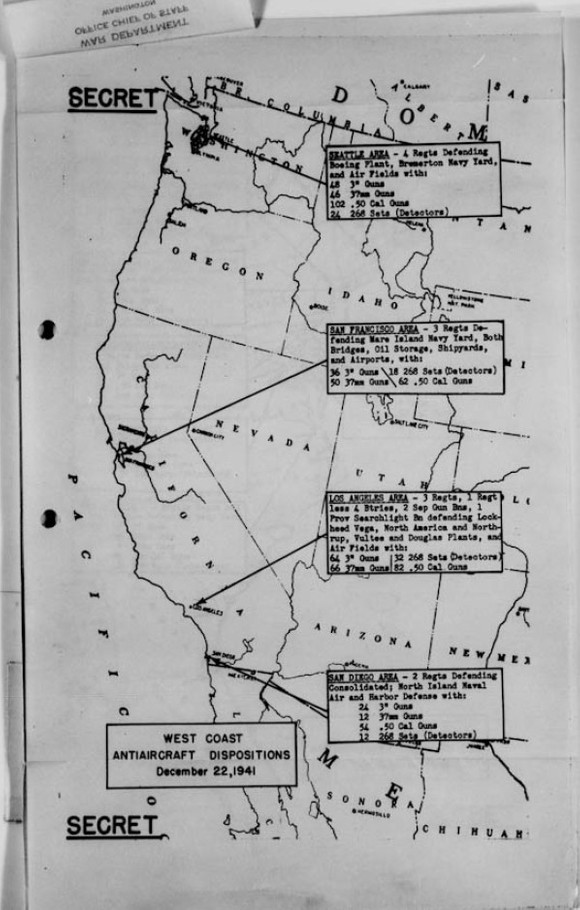
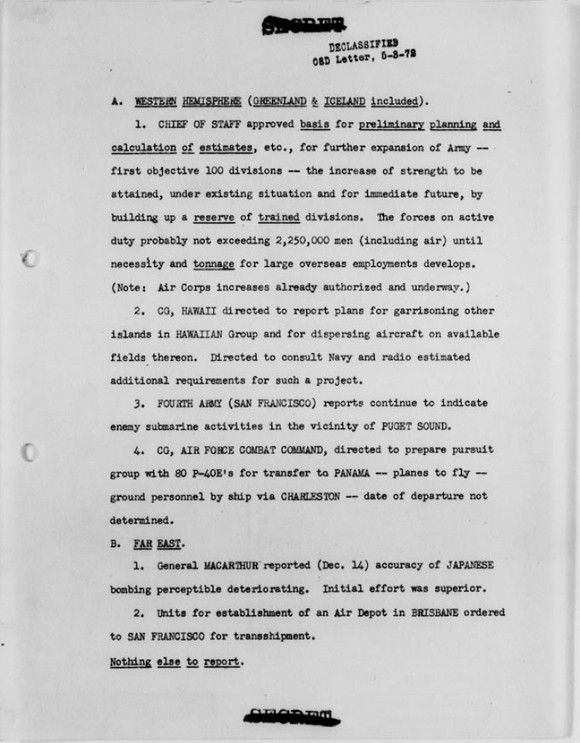
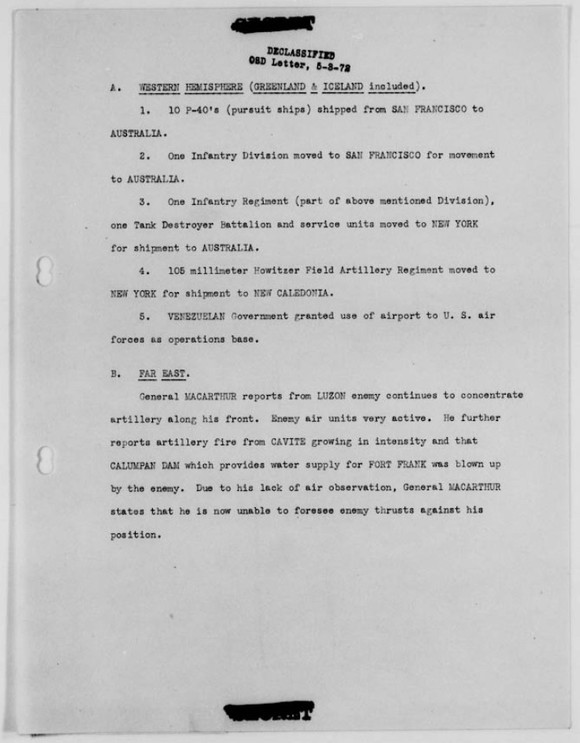
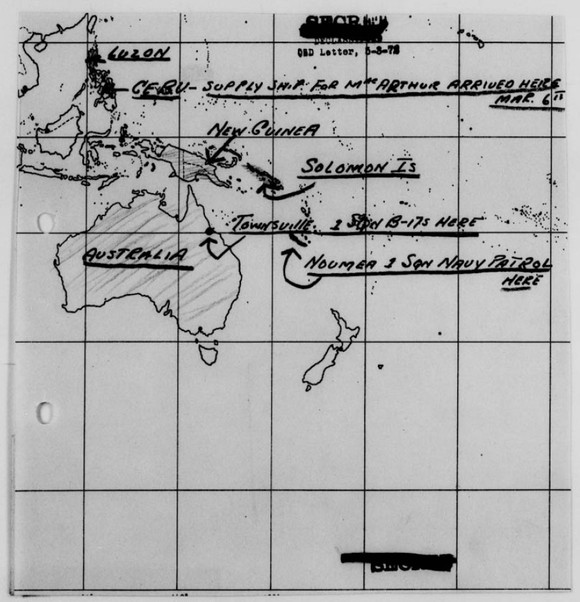
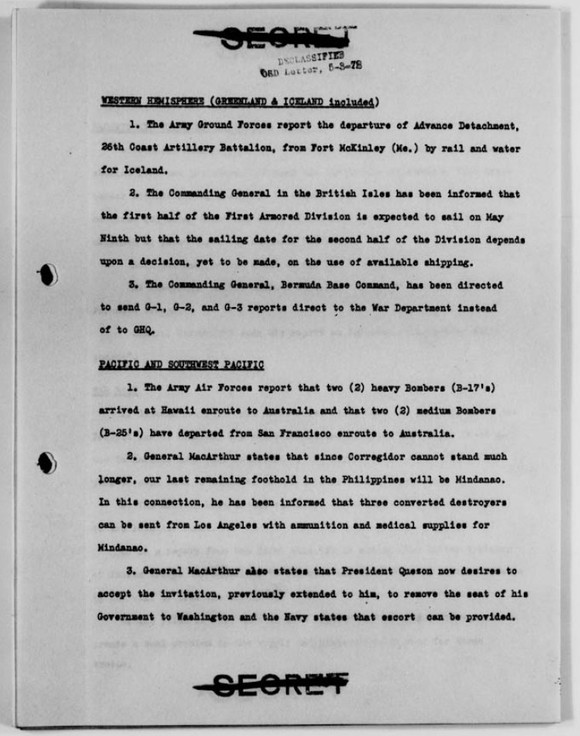
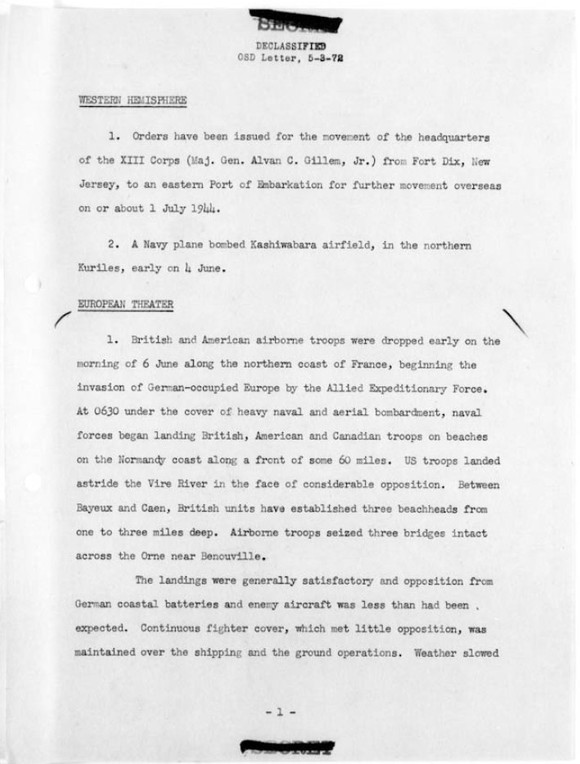

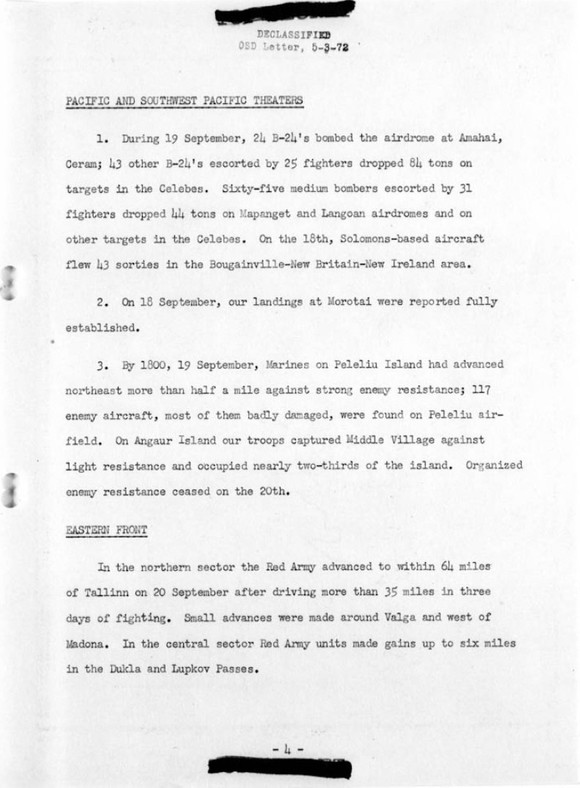
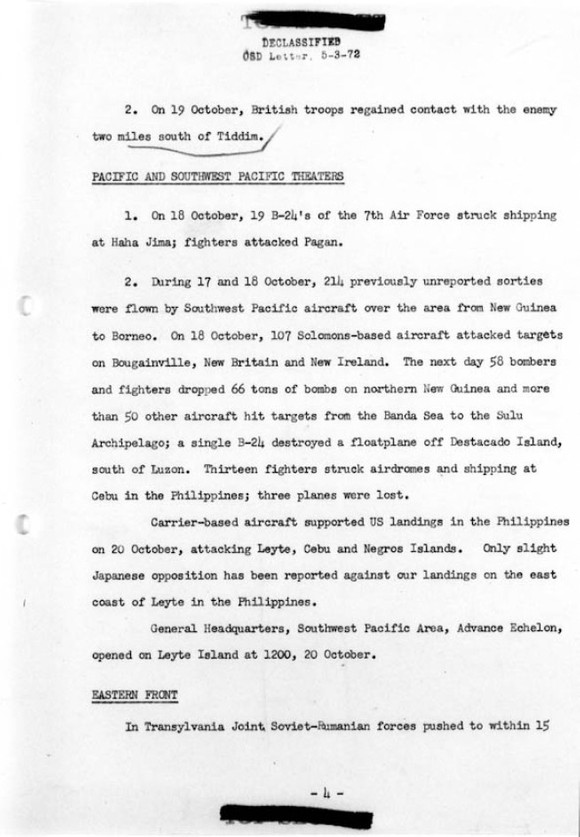

Related products
-
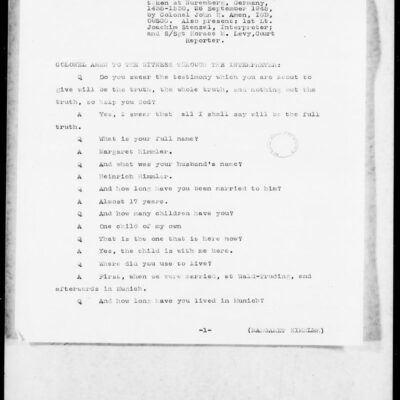

World War II: Interrogation Report and Diary of Margarete Himmler, Wife of Heinrich Himmler
$3.94 Add to Cart -
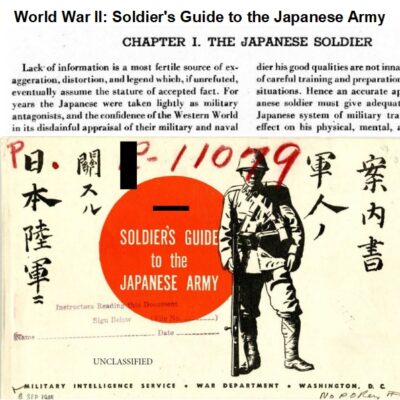

World War II: A Soldier’s Handbook on the Japanese Army
$3.94 Add to Cart -

Civil War Ulysses S. Grant’s Aide de Camp Orville E. Babcock’s Diaries & Court Documents
$3.94 Add to Cart -
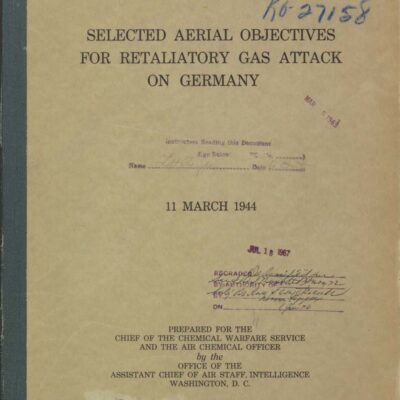

World War II: Targeted Aerial Objectives for Retaliatory Gas Attacks on Germany and Japan
$3.94 Add to Cart